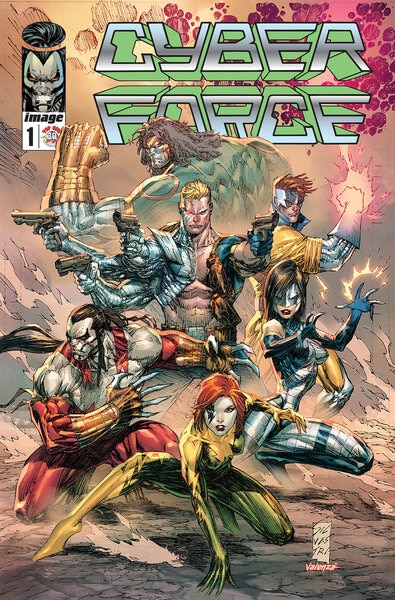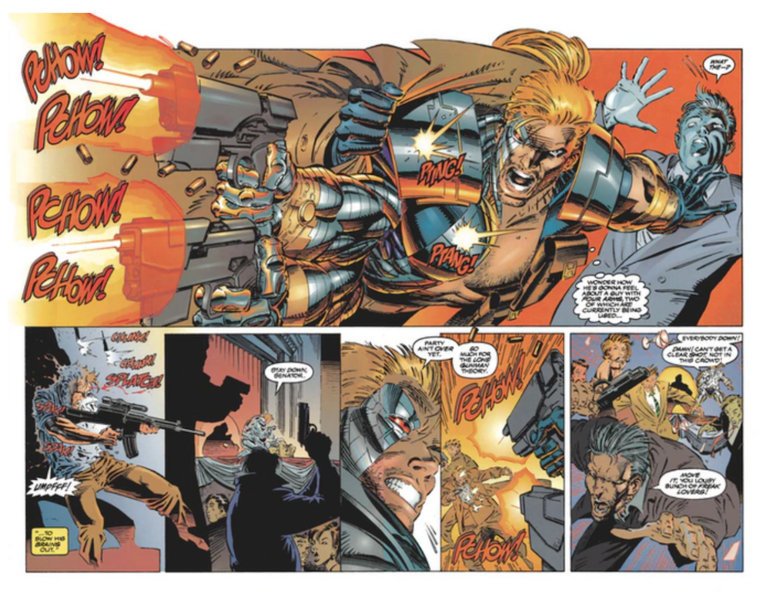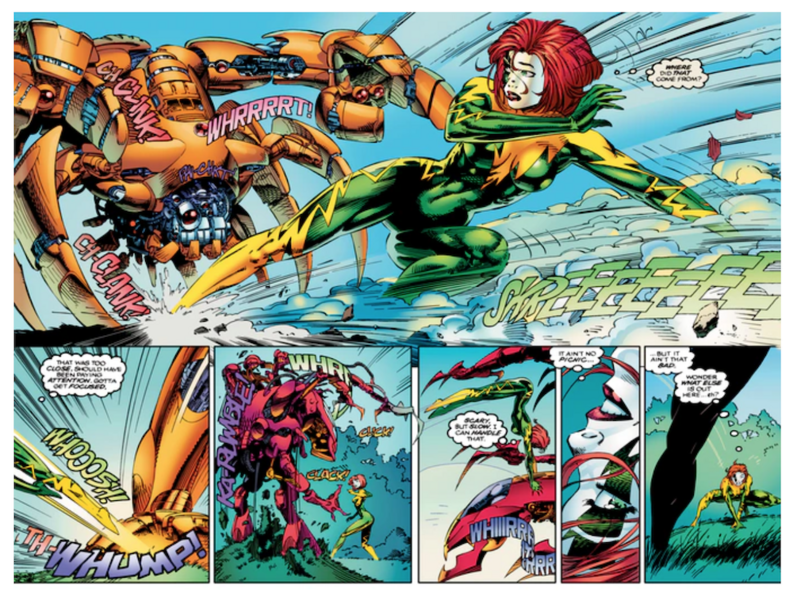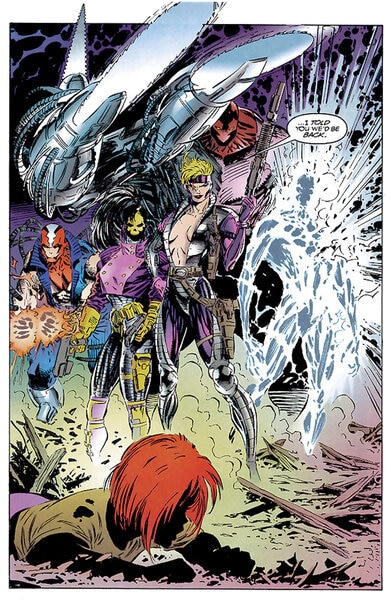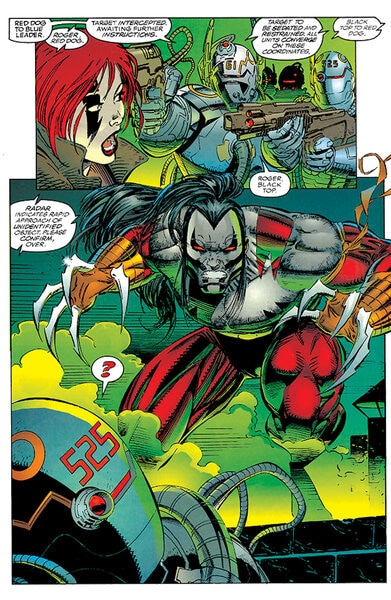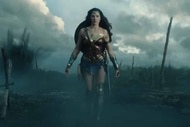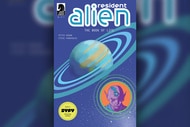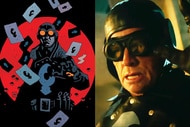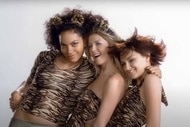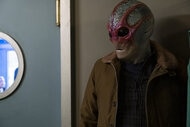Create a free profile to get unlimited access to exclusive videos, sweepstakes, and more!
Exclusive: Artist Marc Silvestri looks back on Cyberforce's 30th Anniversary
The legendary artist reflects on the classic series and reveals how the new Kickstarter collection came together.
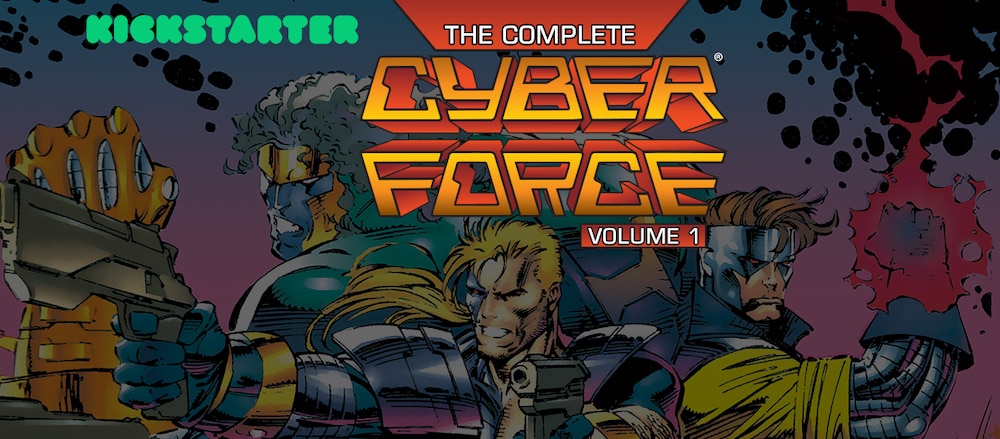
The views and opinions expressed in this article are the author's and do not necessarily reflect those of SYFY WIRE, SYFY, or NBCUniversal.
Marc Silvestri can’t help but laugh and smile as he remembers the maelstrom he was in the middle of three decades ago, as the Image Revolution was upending comics. “It was basically the wild west, right?,” the artist recalls. “Because nothing like that had ever really happened before in comics.”
What he is referring to is that epochal moment in 1992 when seven superstar artists gave their notice at Marvel Comics and headed out the door to launch the creator-owned imprint Image Comics. Silvestri, Rob Liefeld, Todd McFarlane, Jim Lee, Erik Larsen, Jim Valentino and Whilce Portacio all walked away from plum gigs on some of Marvel’s top-selling books to do their own thing. 30 years down the road, it was clearly a smart move. Image transformed comics and helped usher in the creator-owned era that allowed comics creators to gain greater creative control and the ability to take in a more substantial part of the financial success of a comic.
Silvestri was feeling nostalgic during an exclusive conversation with SYFY WIRE for good reason. The title that heralded his first creator-owned effort at Image, Cyberforce, is getting reprinted as part of a special 30th anniversary hardcover edition. The Cyberforce 30th Anniversary Complete Collection is being released exclusively via Kickstarter through a campaign that just launched. It’s a massive 664-page book that includes the original Cyberforce run that was co-written by and pencilled by Silvestri. Hard to believe, considering how popular the book was back in the day, but those original Cyberforce comics haven’t been reprinted in any format since 1994.
Cyberforce, for those not familiar, centers on a team of cybernetically-enhanced heroes with incredibly on-point names such as Velocity, Stryker, Heatwave and Impact who were at war with the evil corporate overlords who created them. As he explained during an interview SYFY WIRE did back in 2017, Silvestri had pitched the idea to Marvel back when he was still penciling for the House of Ideas as part of the X-Men family of books. Marvel turned him down cold. So he pocketed the idea until it was time get Image off the ground.
The series was big, bombastic and utterly '90s. If you wanted to create a time capsule that would show someone in the future just what that decade was all about, you would include a Nirvana CD, a flannel shirt, Zubaz pants and a Cyberforce comic.
Bringing his creations back and introducing them to a new generation of fans was what motivated Silvestri to start digging into the archives at his production house, Top Cow Productions and get this project off the ground. This was not an easy archival project. Because those early Cyberforce issues were being published in the infancy of comics turning to computers, many of the original files were lost, corrupted by now-ancient technology. It fell to Top Cow artist Vince Longo to take point on the Cyberforce collection, a task Silvestri calls “painstaking.”
“He had to go through each page, and if we didn’t have it, he’d scan it off the internet or whatnot or off original pages,” Silvestri says. “From there we reworked it so that it looks just as good, if not better than the original printing. It took a lot of work, because a lot of those pages were lost, so we're hoping that people really appreciate not only the work in there, but also the love that it takes to do it.”
“It's been awhile,” the artist says when asked when was the last time he had laid eyes on those early Cyberforce stories. “In fact, when we did a reboot some years ago, I purposely didn't look at the old ones because I want to try a different tack. But yeah, looking at the proofs now, looking at the collection and I just thought, 'wow.' Number one, there was a lot of it. And number two, it almost brought tears to my eyes because I could see the fun on the page. I could see the fun that literally everybody was having on these pages, for good or bad.”
That fun he’s referring to was the newfound freedom Silvestri and his fellow Image founders felt as they were able to cut loose and blow the staples off their comics with the sizzling, oversized artwork that was a staple of early Image. The benefit of time has helped strip away the pain of the all-nighters Silvestri and his studio mates pulled to meet deadlines and just left behind great memories of what the artist calls “absolute unfettered creativity.”
“For the first time nobody could tell us 'no'. We couldn’t be told, 'you can't put it another double-page spread in this issue, or you can't do this,'' he says. “I still tell this to people today. Comics are a very unique medium in that they're not novels. They're not film or TV. It's a hybrid. It's information shown in two-dimensional form that makes your brain fill in the gaps.”
Silvestri compares those early Image titles to the blockbuster action movies that were a staple at theaters around that time. “We were at the 70 millimeter Cinerama Dome of comics. We brought a scale to these books that was not only exciting to read and look at, but was really exciting to [draw] as the creators. Who didn't want to show the world blowing up, which you really couldn't do then before the days of CGI [onscreen] in a convincing manner. We could do that stuff. And we could afford to make those set pieces last for pages. We could afford to have Stryker and Ripclaw charging the reader with the forearms and guns. And as I was looking back at these pages I kept remembering how much bigger it was. And it was kind of really exciting.”
Speaking of going big, the much-celebrated crossover between Cyberforce and Jim Lee’s own super-team, WildC.A.T.S., is part of the Kickstarter collection. That featured some especially epic artwork that Silvestri points out could only have been done at a creator-owned shop. “Jim did this double gatefold that was a four-page spread twice in one issue of WildC.A.T.S.,” he notes. “We couldn't do that with Marvel or DC. They'd say, “get out of here. What's wrong with you?” But we could do that kind of stuff.”
Over the years, Silvestri has kept busy turning Top Cow into a top-notch production house that has birthed such iconic series as Witchblade and The Darkness, fantasy-based comics that were notably different from the superhero content that the artist had become famous for. In many ways, Top Cow was underrated not just for the quality of the comics it brought to market, but also for leading the way in film and tv adaptations. Witchblade became a series on TNT years before the CW became the de facto DC Comics TV network. Top Cow also published Mark Miller and J.G. Jones' Wanted, which would become a hit movie starring James McAvoy and Angelina Jolie.
The imprint also helped launch the careers of future comics superstars such as David Finch and the late Michael Turner, whose series Fathom was one of Top Cow’s top sellers. Their contributions to the Cyberforce canon are also included in the new hardcover. The talent that has been nurtured under the Top Cow umbrella is a part of his legacy that means a lot to Silvestri, who garners immense respect from his peers. No less an authority than Jim Lee considered Silvestri the best pure artist of the original Image founders, and said so in our Image Comics docu-series.
If you’ve ever had the pleasure of watching him do a drawing demo at a convention, you know that Silvestri’s skills as well as his professorial demeanor would have made him an amazing art teacher if he wasn’t busy running a big-time comics company. But despite the obvious pride he takes in the success of the artists he gave a shot to, he downplays his impact. “They walked in with skills. All I did was kind of look at their work and encourage and point out what I could to help move them along, just rough here and there and like, “okay, try this, try this,”” Silvestri says. “It's just the thrill of watching all of them get so good, so fast was mind blowing.”
The Top Cow studio was a 24/7 operation, according to Silvestri and it fostered an environment brimming with competitiveness and creative energy. “We all got better, being together in the studio. We all wanted to learn including myself,” he recalls. “I’d go by Billy Tan’s table and see what he was drawing, and I’d run back to my table to step up my game! David Finch drew a shot of Ripclaw that is still one of my favorites of all time. He drew him much better than I ever could. I give him a lot of crap about that! But the artistic legacy was a real part of the whole legacy of Image-slash-Top Cow which wasn't expected, and I'm very, very humbled by it.”
Silvestri obviously wants the collection triggers the nostalgia in fans who were around back in the early Image days. But he also hopes to give comics readers who weren’t around back then a sense of the outsized insanity of the '90s comics industry. “It was a unique time in history,” he says. “We want to show younger fans who wonder what the fuss was all about back then. Well, here you go.”
For more details on the Cyberforce 30th Anniversary Complete Collection, click here.
